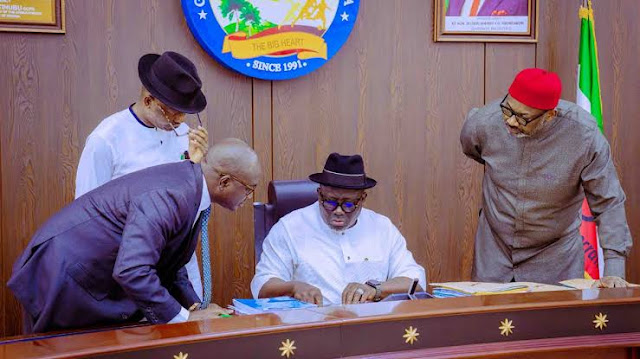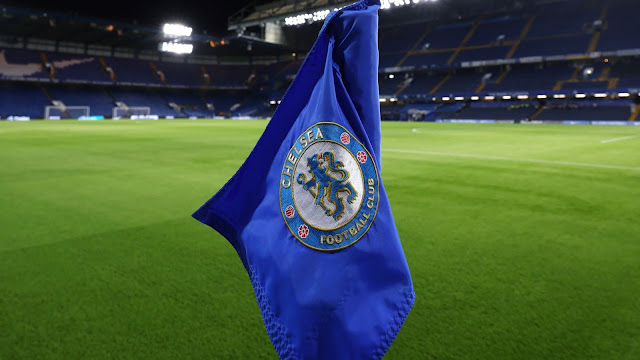In a bold move to enhance professionalism, discipline, and modesty in the workplace, the Delta State Government has rolled out a detailed and stringent dress code policy for its civil servants. The initiative, announced through a circular issued by the Office of the Head of Service, seeks to address what the government describes as an “unpleasant practice of improper dressing” that has become prevalent within the state’s public service. This new directive, which updates an earlier dress code from 2009, sets clear guidelines for attire across various levels of the civil service, emphasizing neatness, professionalism, and cultural sensitivity while explicitly banning certain styles and accessories deemed inappropriate.
The policy, which came into effect immediately following its announcement, outlines specific dress requirements for both male and female public servants based on their grade levels. It also mandates heads of departments to enforce compliance rigorously, with instructions to send non-compliant workers home to change and warnings of potential sanctions for repeated violations. The circular underscores the importance of senior public servants setting an example for their subordinates and invokes the Public Service Rule No. 04314, which prohibits officers from appearing in attire deemed “inappropriate or immodest” in official settings.
Rationale Behind the New Dress Code
The Delta State Government’s decision to revise and enforce a new dress code stems from a desire to uphold decorum and project a professional image within the public service. The circular highlights the growing trend of improper dressing, which the government believes undermines the values of discipline and modesty expected of public servants. By introducing a structured and detailed policy, the state aims to standardize workplace attire, ensuring that it aligns with the professional responsibilities and cultural diversity of Delta State.
The government emphasizes that the dress code is not merely about aesthetics but about fostering a culture of discipline and respect within the public service. The circular explicitly states that the policy is intended to “promote discipline in dressing culture among Public Servants,” with a focus on ensuring that attire reflects the level of responsibility and professionalism associated with each grade level. Additionally, the policy acknowledges the state’s diverse cultural backgrounds, allowing limited flexibility for traditional attire on designated days while maintaining strict standards for modesty and appropriateness.
Detailed Dress Code for Male Public Servants
The new dress code categorizes male public servants based on their grade levels (GLs) and provides specific guidelines for acceptable attire:
Officers on Grade Levels 13 and Above
Senior officers in this category are required to wear complete suits to work, reflecting their high-ranking positions. The only exception is for uniformed officers, such as those in specialized roles, who are permitted to wear their designated uniforms. This requirement underscores the expectation that senior officers project a polished and professional image at all times.
Officers on Salary Grade Levels 07–12
Officers in this mid-level category have slightly more flexibility. They may wear a complete suit, similar to their senior counterparts, or opt for a combination of trousers, a shirt, and a tie. However, Administrative Officers within this group are required to always wear suits, emphasizing their role in administrative leadership. This provision ensures a balance between professionalism and practicality for mid-level staff.
Officers on Salary Grade Levels 01–06
Junior officers in this category are permitted to follow the same guidelines as those on SGLs 07–12 (i.e., suits or trousers with a shirt and tie). However, uniformed staff, such as drivers or plant operators, are required to wear their designated uniforms. In cases where uniforms are unavailable, these officers must wear trousers and shirts, ensuring a neat and professional appearance.
Traditional Attire
Male public servants across all grade levels are allowed to wear traditional attire on Fridays and during special occasions. Acceptable options include smart senator suits, modern caftans, or native shirts paired with matching trousers and complemented by an appropriate traditional cap. However, the circular explicitly prohibits certain styles, such as Resource Control and Papas caps, and bans bushy beards, citing them as inconsistent with the desired professional image.
Dress Code for Female Public Servants
The dress code for female public servants is equally detailed, with specific requirements tailored to grade levels and an emphasis on modesty and professionalism:
Officers on Salary Grade Levels 13 and Above
Senior female officers are required to wear trouser suits, skirt suits, or corporate gowns that fall below the knee. Trousers must be part of a suit, and hats are not permitted. This requirement reflects the expectation that senior female officers maintain a high standard of professionalism and elegance in their attire.
Officers on Salary Grade Levels 07–12
Mid-level female officers have the option to wear trouser suits, skirt suits, or free gowns that extend below the knee and include sleeves. Alternatively, they may wear skirts below the knee paired with blouses that have sleeves. The policy explicitly prohibits sleeveless tops and spaghetti straps, emphasizing modesty and appropriateness.
Officers on Salary Grade Levels 01–06
Junior female officers are required to follow similar guidelines as those on SGLs 07–12, wearing free gowns with sleeves or skirts below the knee paired with sleeved blouses. This ensures a consistent standard of modesty across all levels of the civil service.
Traditional Attire
Like their male counterparts, female public servants are permitted to wear traditional attire on Fridays and during special occasions. Acceptable options include traditional costumes such as buba and wrapper, skirts with blouses, or gowns made from African fabrics, provided they have proper sleeves. The circular emphasizes that all attire must be worn with decorum, avoiding provocative exposure of cleavage. Additionally, the policy bans braided or tinted hair, long eyelashes, and artificial nails, citing these as incompatible with the desired professional image.
Enforcement and Compliance
To ensure strict adherence to the new dress code, the Delta State Government has placed significant responsibility on heads of departments and permanent secretaries. These officials are tasked with monitoring compliance and taking immediate action against violations. The circular instructs heads of departments to send any officer dressed inappropriately home to change into acceptable attire before resuming work. Failure to comply could result in more severe sanctions, as outlined in the Public Service Rule No. 04314, which empowers authorities to address improper dressing as a breach of conduct.
The government has also called on senior public servants to lead by example, modeling appropriate dressing habits to guide and correct their subordinates. This emphasis on leadership underscores the cultural shift the government hopes to achieve, where professionalism and discipline are visibly demonstrated through attire.
To promote awareness of the new policy, permanent secretaries and heads of extra-ministerial departments are directed to publicize the circular’s contents widely among staff. This includes ensuring that all employees are fully informed of the dress code requirements and the consequences of non-compliance. The circular’s tone is firm, reflecting the government’s commitment to enforcing the policy rigorously and without exception.
Cultural Sensitivity and Flexibility
While the dress code is strict in its requirements for professionalism and modesty, it also acknowledges Delta State’s rich cultural diversity. The allowance for traditional attire on Fridays and special occasions is a nod to the state’s cultural heritage, enabling public servants to express their identity through attire such as senator suits, caftans, buba and wrapper, or gowns made from African fabrics. However, even these traditional options are subject to the overarching principles of modesty and decorum, ensuring that cultural expression aligns with the professional standards of the public service.
The prohibition of certain styles, such as Resource Control and Papas caps for men and braided or tinted hair for women, reflects the government’s intent to balance cultural expression with a standardized professional image. These restrictions may spark debate among civil servants, as they touch on personal and cultural preferences. However, the government’s position is clear: attire must prioritize professionalism and avoid elements deemed distracting or inappropriate in a workplace setting.
Implications for the Public Service
The introduction of this dress code represents a significant step toward standardizing workplace conduct in Delta State’s public service. By explicitly defining acceptable attire and enforcing compliance, the government aims to create a more disciplined and professional workforce. The policy also sends a broader message about the importance of presentation in public service roles, where employees are often seen as representatives of the state government.
For civil servants, the new dress code may require adjustments to their wardrobes and grooming habits. The ban on bushy beards, artificial nails, long eyelashes, and braided or tinted hair could be particularly challenging for some employees, as these are popular personal style choices. However, the government’s emphasis on modesty and professionalism suggests that these restrictions are intended to create a uniform standard that minimizes distractions and promotes equality across the workforce.
The enforcement mechanism, which includes sending non-compliant officers home and potential sanctions, underscores the seriousness with which the government views this policy. This approach may deter violations but could also lead to tensions if employees feel their personal expression is being unduly restricted. The success of the policy will likely depend on how effectively heads of departments communicate and enforce the guidelines, as well as how receptive civil servants are to the changes.
Broader Context and Potential Challenges
The Delta State dress code policy aligns with similar initiatives in other Nigerian states and public institutions, where dress codes have been used to promote professionalism and curb perceived excesses in workplace attire. However, such policies often face criticism for being overly prescriptive or for limiting personal freedom. In Delta State, the explicit bans on certain hairstyles, accessories, and grooming practices may raise concerns about cultural sensitivity, particularly among female civil servants who may view braided hair or other styles as integral to their identity.
Additionally, the policy’s reliance on subjective terms like “decorum” and “modesty” could lead to inconsistent enforcement, as interpretations of these standards may vary among heads of departments. To address this, the government may need to provide clearer guidance or training for supervisors to ensure uniformity in how the policy is applied.
The allowance for traditional attire on Fridays and special occasions is a positive step toward inclusivity, but the restrictions on specific styles (e.g., Resource Control caps or tinted hair) may still be seen as limiting by some employees. Balancing cultural expression with professional standards will be a key challenge for the government as it seeks to implement this policy.
Conclusion
The Delta State Government’s new dress code for civil servants is a comprehensive effort to instill discipline, professionalism, and modesty in the public service. By setting clear guidelines for attire based on grade levels, allowing limited flexibility for traditional wear, and enforcing compliance through departmental oversight, the government aims to create a more polished and cohesive workforce. While the policy reflects a commitment to cultural sensitivity and professionalism, its success will depend on effective communication, consistent enforcement, and the willingness of civil servants to adapt to the new standards. As Delta State moves forward with this initiative, it sets a precedent for other states and institutions seeking to standardize workplace conduct through dress codes, while navigating the delicate balance between uniformity and personal expression.








